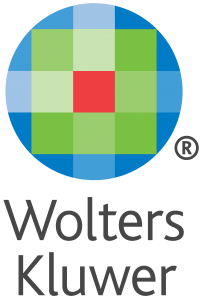Medical knowledge doubles every few months. This is a fantastic achievement – and creates a practical challenge:
The exponentially growing mass of knowledge – together with an increasing complexity of patient cases – makes it impossible for any healthcare professional to monitor and interpret all the latest evidence to make the most appropriate care decisions.
Did we bite off more than we can chew? Or is it possible to manage accumulating knowledge in a more efficient way?
Keeping UpToDate
This year, Wolters Kluwer’s UpToDate solution celebrated its 30th anniversary. As it stands today, UpToDate is a clinical decision support tool that equips healthcare practitioners with the latest medical research and recommendations. UpToDate enables doctors to provide the best care everywhere: whether they’re in a state-of-the-art academic hospital in a European capital, or in a rural and remote area supporting local populations.
With or without an internet connection: today, UpToDate is used by over two million doctors, nurses, pharmacists and other clinicians all around the world.
But behind today’s reach lies a long road of continuous innovation.
Many good ideas started off in a garage…
UpToDate began as “one of those” garage start-ups – sending out floppy disks to a few American doctors in the Boston area, focusing on one medical specialty.
Over the years, UpToDate expanded to 25 medical specialties. Still today it is the only clinical decision support resource of its kind that studies associate with improved health outcomes for patients.
Rather than one innovation, UpToDate is an example of continuous innovations, keeping up with expanding technological possibilities and broadening demand. The inspiration for expansion came from the user community – doctors, nurses and other clinicians – because we take feedback received very seriously.
Squaring local and global
UpToDate is a global resource – but we have localised the experience by adding a multi-lingual interface. A doctor in Lisbon can use the solution’s interface in Portuguese and a nurse in Germany can use our search function in German, and so forth.
In a similar way, doctors and pharmacists have asked our help in navigating the various names under which one and the same drug is known in different markets. In fact, there are many commonly used medications that would require pharmacists or doctors to individually look up and convert American names to local ones. Until we included this function, they would have had to resort to internet searches and non-specialised websites where reliability, sources and accuracy come with a question mark.
Looking up drug names across Europe and other regions, at the outset, may seem like a simple enough task. In reality, however, this turned into a massive undertaking.
Vetting huge volumes of data – safely
When vetting drug data, tech and collaboration played key roles. To coordinate unique drug identifier codes in the Wolters Kluwer system with data from WHODrug Global, we had to develop a mapping process. The necessary technology was built in iterations involving both engineering and editorial teams. Plus, we not only had to confirm medications, in many cases we also had to confirm multiple dosages.
This all-new mapping process was followed by the development of automated loader software that served as a window into the progress of code mappings in real-time for clinical staff in charge of reading vital, new drug information to go live.
A large part of our energy went into ensuring safety: Over 8,000 medication brand names that are associated with even more generic drugs require cautionary alerts to users. And across markets, the risk of drug name confusion had to be minimised: natural language processing helped identify suspected “sound-alike” names that needed further review and flagging as a risk for mix-ups. Finally, we had to reconcile and map out numerous, unique, naming conventions from each country.
One unexpected insight was that we had to recalibrate and adapt the advanced intelligent search algorithms in UpToDate. We had to accommodate both its existing disease-focused clinical content as well as volumes of – differently formatted – new drug topics.
This is a continuous effort and, as we celebrated UpToDate’s 30th birthday, we added more than half a million international brand names from over 150 countries to its international drug brand name database and its drug reference companion solution, Lexicomp.
The personalisation challenge
The EU is rightly pushing towards the digitalisation in the health sector. The eHealth priorities and their ambition to personalise medicine through shared European data infrastructure hold promise for further innovation. The Next Generation EU4Health programme also creates important enablers for better access to medicines and a strengthening of health data, digital tools & services, and the digital transformation of healthcare. Importantly, EU4Health also seeks to develop EU health legislation that supports evidence-based decision-making in healthcare.
To have real impact, any innovation needs uptake. And in the European context this means motivating hospitals and clinicians (often stretched already) to make best use of the support that digital projects can provide. Clinicians and patients would benefit immensely from interoperable and easy to access systems that are bolstered by advanced digital technology and support, inter alia, clinical decisions. To make this reality, EU policy needs to define targeted financial incentive programmes that reward adoption of clinical decision support systems. These could be modeled after the 2009 US HITECH Act’s specific, measurable, achievable, realistic and timely targets for digital health development. Similar results – better quality, safety and efficiency, with better coordinated patient care and high impact improvements in outcomes – are possible in Europe.
Patient needs are evolving rapidly, particularly since the COVID-19 pandemic. And we keep gaining additional knowledge every day. To keep up with patients’ needs across the continuum of care, we need to find solutions as a continuum of innovation.


